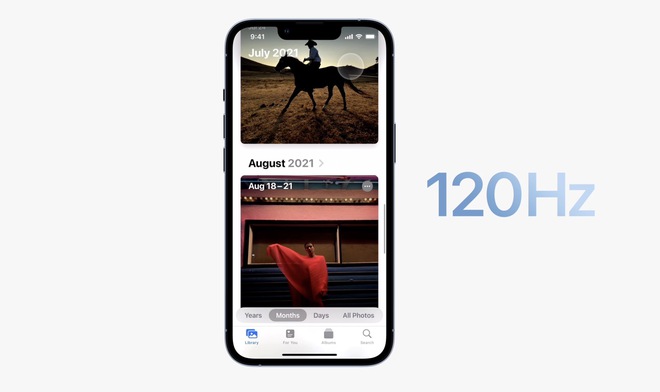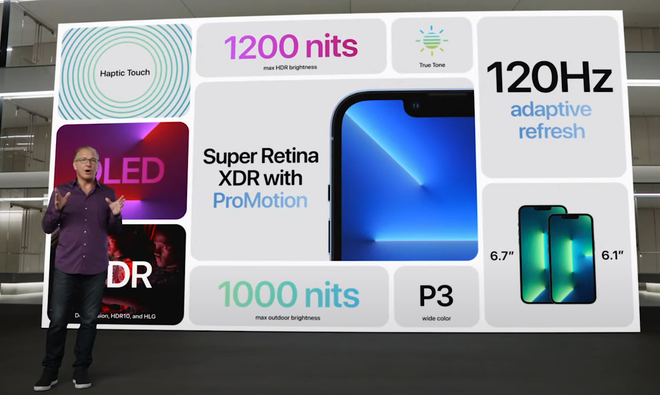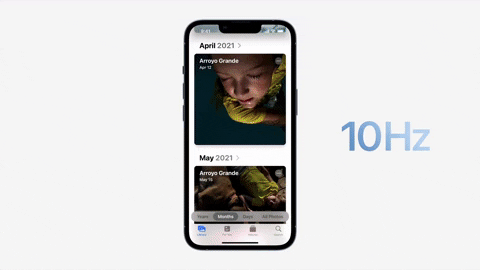Welcome to the 120Hz Club, invite iPhone 13 Pro to meet the Android “seniors” who have gone before
- Tram Ho
High refresh rate displays are not a new trend, but after a few years of not bringing this feature to the iPhone, Apple has finally adopted the 120Hz Pro Motion display in the iPhone 13 Pro. However, there have been dozens of Android phones ahead of it, so let’s take a look at those Android devices with 120Hz screens before the iPhone.
Monitor refresh rate refers to the number of times the monitor refreshes completely per second. The standard for many years was 60Hz, capable of 60 refreshes per second. However, in recent years, many Android manufacturers have moved to higher options, with some even going up to 144Hz or more.

Ironically, the trend of using higher refresh rates started in 2017, right on Apple’s iPad Pro itself. However, it was Android that first brought this trend to phones just a few months later with the Razer Phone, which had a 120Hz LCD display. The OnePlus 7 Pro got a 90Hz OLED display in mid-2019. Google followed suit with a 90Hz display on the Pixel 4 series.
In 2020, 120Hz OLED screens become mainstream on flagship smartphones, with the OPPO Find X2 and Galaxy S20 series both adopting this feature.
Below is a list of popular Android phones with 120Hz OLED screens, there are many other devices in the low-cost or domestic market that are not listed but also use faster refresh rates.
Asus ROG Phone II
Oppo Find X2/Pro
Samsung Galaxy S20/S20+/S20 Ultra
OnePlus 8 Pro
Samsung Galaxy Note 20 Ultra
Xiaomi Mi 10 Ultra
OnePlus 8 billion
Samsung Galaxy S20 FE
Samsung Galaxy S21/S21+/S21 Ultra
Vivo X60/Pro
Xiaomi Mi 11/Pro/Ultra
OnePlus 9/Pro
Oppo Find X3/Pro
Samsung Galaxy A52 Samsung
Galaxy Z Flip 3 Samsung
Galaxy Z Fold 3

A common argument in favor of Apple is that the company waits until it can outperform a feature instead of doing it earlier to compete. While reasonable, it doesn’t really apply in this case.
According to Apple, the 120Hz OLED screen of the iPhone 13 is no different from what Android phones have offered for a while. “ProMotion” to Apple means that the display can intelligently adjust the refresh rate depending on what’s on the screen, from low frequencies for static content to faster ones when scrolling. While this was a new idea on the iPad Pro a few years ago, it’s not uncommon on Android today. iPhone 13 Pro can change from 10Hz to 120Hz.

Samsung is one of the biggest names here. The company’s entire 2021 premium lineup that offers this feature includes the Galaxy S21, S21+, and S21 Ultra. Both the Galaxy Z Fold 3 and Flip 3 offer this option. Even last year, Samsung offered this feature on the Galaxy Note 20 Ultra, Galaxy Z Fold 2, and Galaxy S20 series.
It’s also possible that Apple’s iOS improvements will make 120Hz on the iPhone 13 Pro feel better than it does on Samsung devices and other Android phones. However, it still cannot be explained why Apple waited so long to apply this feature after many bugs have been fixed, and it is a pity that buyers choose the iPhone 13 and iPhone 13 Mini for the price. More affordable will lack this feature.
Reference: 9to5google
Source : Genk
